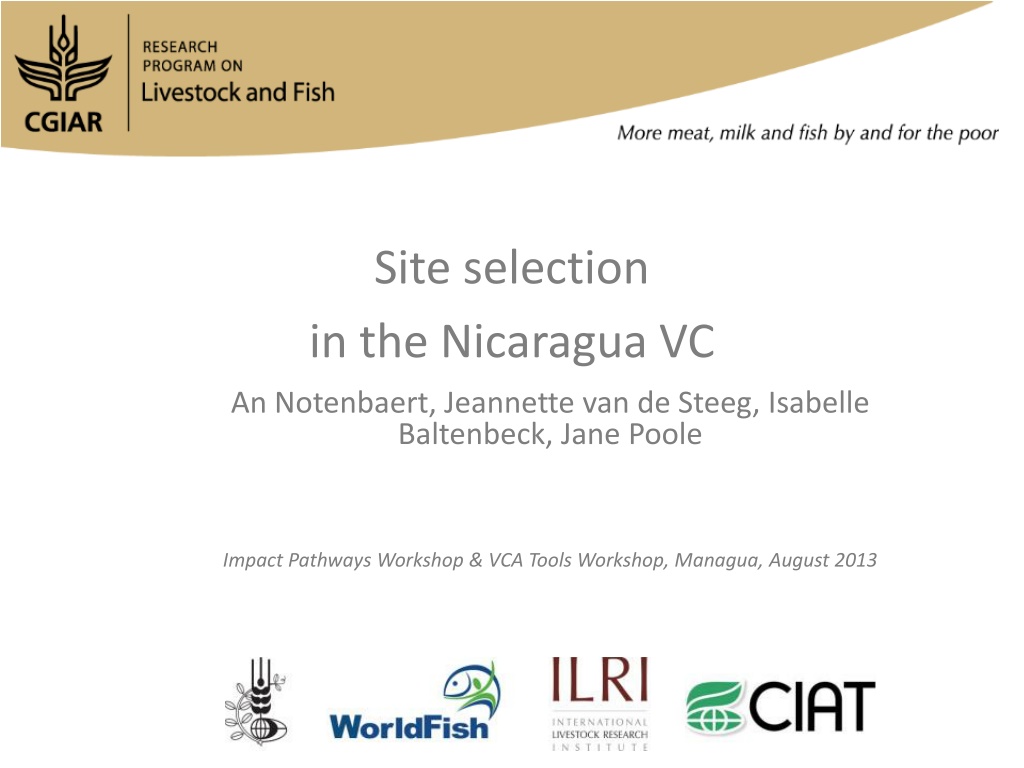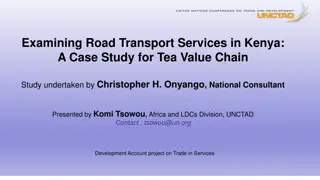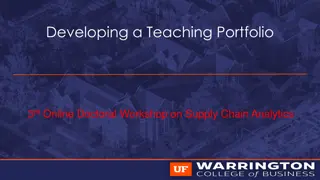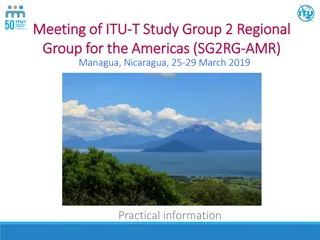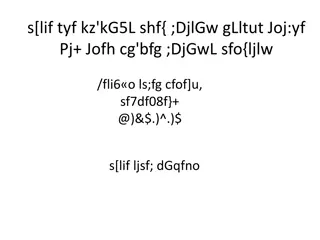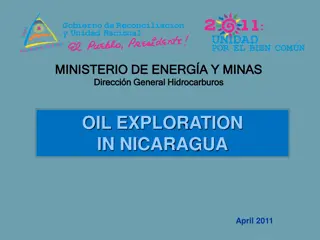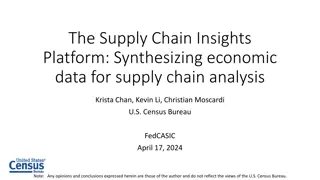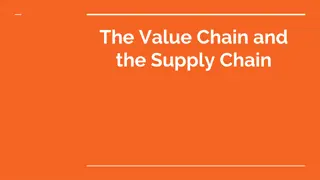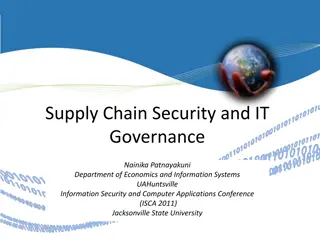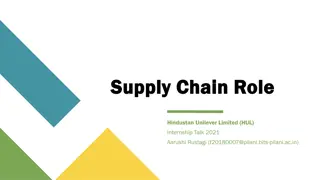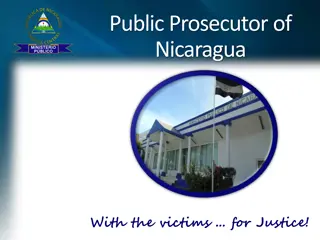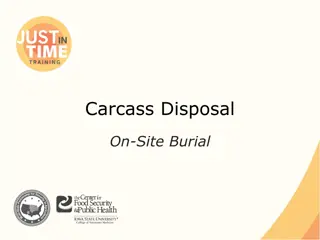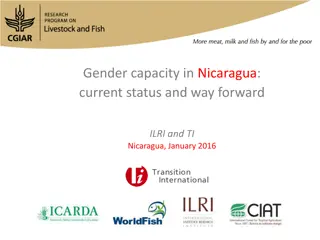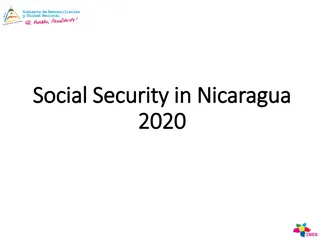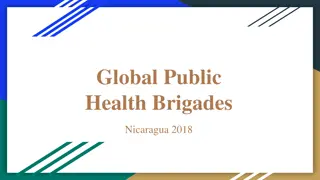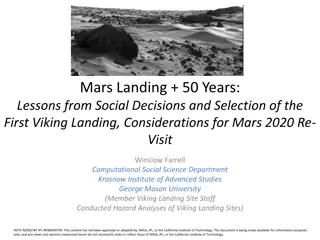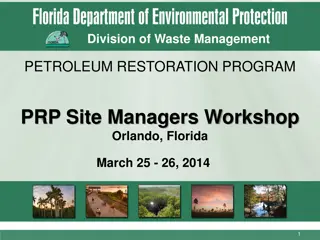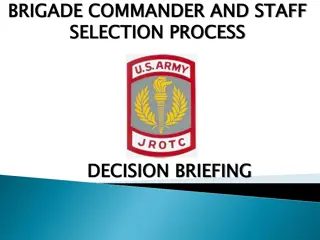Site Selection Process in Nicaragua's Value Chain: Workshop Insights
Workshop held in Managua, August 2013, highlighted the rationale and criteria for site selection in Nicaragua's value chain projects. The process involved defining target zones, spatial stratification, scoring potential sites based on hard and soft criteria, and selecting final sites for project implementation.
Download Presentation

Please find below an Image/Link to download the presentation.
The content on the website is provided AS IS for your information and personal use only. It may not be sold, licensed, or shared on other websites without obtaining consent from the author. Download presentation by click this link. If you encounter any issues during the download, it is possible that the publisher has removed the file from their server.
E N D
Presentation Transcript
Site selection in the Nicaragua VC An Notenbaert, Jeannette van de Steeg, Isabelle Baltenbeck, Jane Poole Impact Pathways Workshop & VCA Tools Workshop, Managua, August 2013
Site selection - rationale Huge heterogeneity in bio-physical and socio-economic context Identify a small number of representative research locations: That capture the gradient of key variables provide opportunity for good research and impact
Site selection - criteria Field Sites are selected using a combination of hard and soft criteria Hard criteria Based on maps of e.g. cattle density, poverty and market access Implemented in a Geographical Information System (GIS) Soft criteria Ease of working Opportunity to double up with Field Sites with other projects/programs Presence and capacity of partners Institutional actor presence and networks Resource availability interest from other donors Potential for impact Current practices
Multi-step procedure 1. Define the target zone Different types of markets in Nicaragua 2. Decide what a site is Municipality or cluster of municipalities? 3. Spatial stratification and selection of potential sites Based on the hard criteria Representing the different contexts/environments Our proposal: cattle density, poverty, market access 4. Scoring of potential sites Based on the soft criteria Impact indicators and ease of working indicators 5. Agreement on final set of sites Start implementation of the project
Define target zone Site definition Spatial stratification Scoring of potential sites Different types of markets LaF (milk, meat & fish for the poor by the poor) strata to consider Peri-urban (not in this case) Rural to urban Rural to rural
Define target zone Site definition Spatial stratification Scoring of potential sites Different types of markets - 2
Define target zone Site definition Spatial stratification Scoring of potential sites Departments and municipalities
Define target zone Site definition Spatial stratification Scoring of potential sites Why stratify into domains? To ensure representativeness and inclusiveness of the diverse environments To evaluate research processes etc. in different environments To facilitate lessons learning across the various VCs To facilitate scaling out of interventions
Define target zone Site definition Spatial stratification Scoring of potential sites Spatial stratification Spatial criteria: Cattle density high density areas Poverty high poverty areas Market access good vs. bad access areas LaF strata to consider: Peri-urban Rural to urban Rural to rural
Define target zone Site definition Spatial stratification Scoring of potential sites Cattle densities Cut off value: 60 head/km2
Define target zone Site definition Spatial stratification Scoring of potential sites Poverty Cut off value: 50% of population
Define target zone Site definition Spatial stratification Scoring of potential sites Market access Cut off value: 4 hours Cut off value: 2 hours
Define target zone Site definition Spatial stratification Scoring of potential sites Domains Milk Value Chain (< 2 hours travel time) Meat Value Chain (< 4 hours travel time) Cattle densities, poverty, market access - in that order -
Rural to rural markets - Meat Value Chain - Cattle densities, poverty, market access - in that order -
Rural to rural markets - Milk Value Chain - Cattle densities, poverty, market access - in that order -
Rural to urban markets - Meat Value Chain - Cattle densities, poverty, market access - in that order -
Rural to urban markets - Milk Value Chain - Cattle densities, poverty, market access - in that order -
Define target zone Site definition Spatial stratification Scoring of potential sites Selection criteria The spatial criteria ALONE don t have a high enough resolution to select field sites completely, so we combine them with soft criteria AND ground-truthing (with stakeholders) to come up with the final selection Under soft criteria we understand: Partners presence & capacity On-going research activities Proximity and comparability to other long-term research sites Institutional actor presence & networks Resource availability Others?.... Example criteria Example criteria
CGIAR Research Program on Livestock and Fish livestockfish.cgiar.org livestockfish.cgiar.org CGIAR is a global partnership that unites organizations engaged in research for a food secure future. The CGIAR Research Program on Livestock and Fish aims to increase the productivity of small-scale livestock and fish systems in sustainable ways, making meat, milk and fish more available and affordable across the developing world.
Pre-selected sites and domains - Meat Value Chain - Cattle densities, poverty, market access - in that order -
Pre-selected sites and domains - Milk Value Chain - Cattle densities, poverty, market access - in that order -
